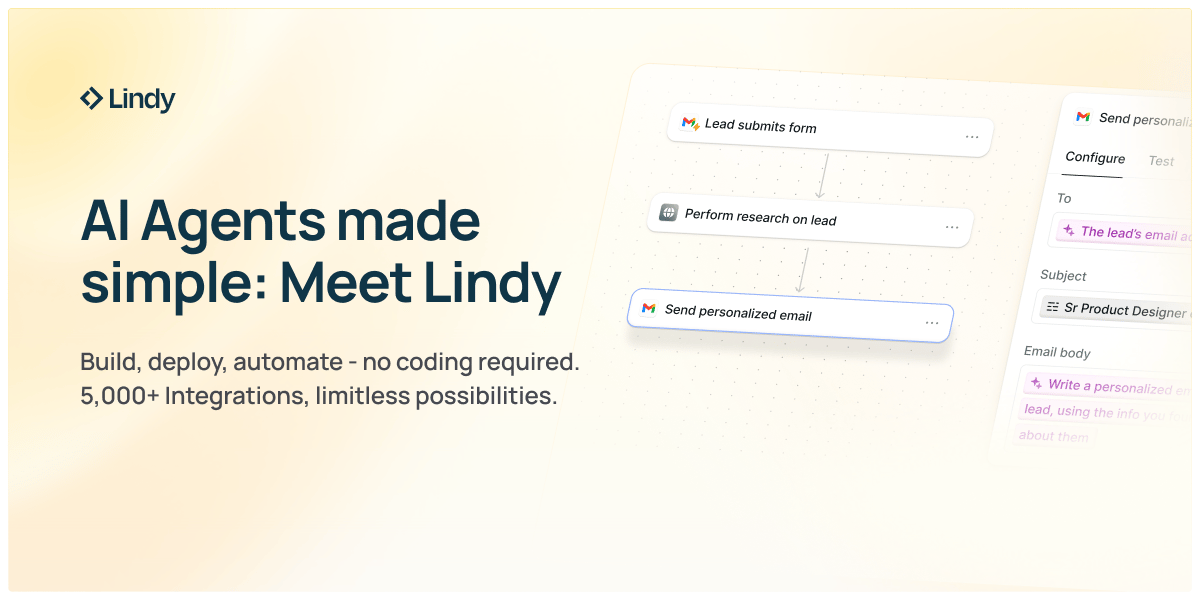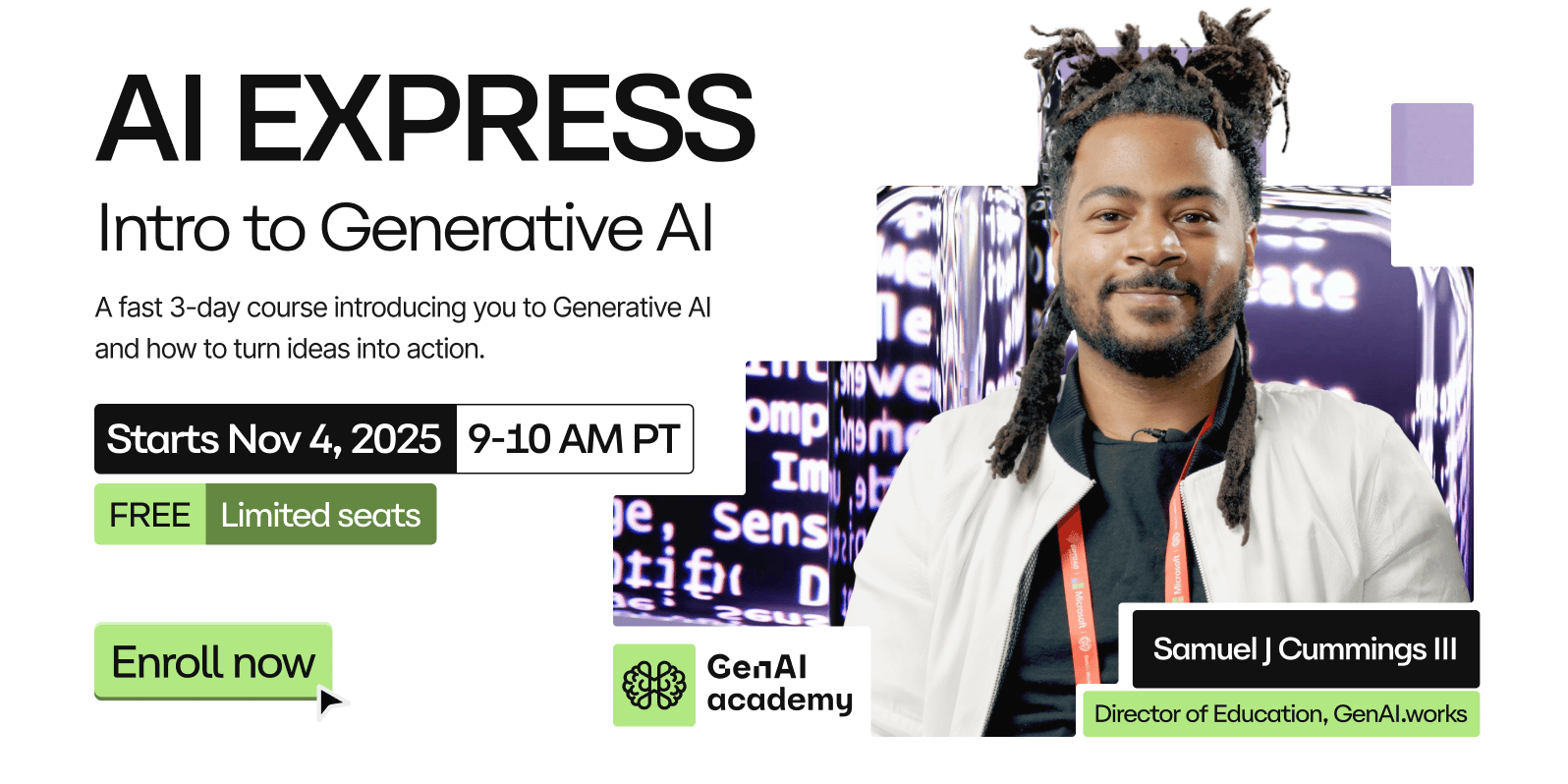
Welcome back! Adobe unveiled an AI that acts like your personal social media director, Qualcomm took aim at Nvidia’s GPU empire and Amazon’s AI overhaul is putting 14,000 jobs on the line. Let’s dive in.
In today’s Generative AI Newsletter:
• Adobe’s Project Moonlight turns into your AI social media director
• Qualcomm fires at Nvidia and AMD with new AI chips
• Nvidia & Oracle build America’s largest AI supercomputer
• Amazon cuts 14,000 jobs amid AI automation push
Latest Developments
Adobe's AI Social Media Director Arrives With Project Moonlight

Image Source: Adobe
Adobe is launching Project Moonlight, an AI agent that acts as a centralized creative director for social media campaigns. Built on the Firefly platform, the tool connects across Adobe’s creative suite and your social channels to help you brainstorm, edit, and publish content in your personal voice. Users describe their vision in text, and the AI assistant coordinates across Adobe's editing tools to create personalized images, videos, and social posts.
Here's what's new:
Project Moonlight serves as an orchestration assistant that coordinates across multiple Adobe apps and external platforms.
Context-aware intelligence connects to Creative Cloud libraries and social accounts to understand user style, projects, and assets.
Conversational creation transforms text exchanges into polished, finished creative content, guiding users from idea to execution.
Data-driven strategy analyzes social channel performance, identifies trends, and crafts content strategies to grow audiences.
Private Beta will roll out in the coming months to users who join the waitlist.
Adobe is positioning Project Moonlight as a conductor rather than a single instrument. Where each AI assistant inside Photoshop, Premiere, or Lightroom specializes in its domain, Moonlight brings them together into one creative team. The company is betting that social media work benefits less from standalone tools and more from coordination, turning scattered workflows into a single conversation that understands both the creator's style and what actually performs.
Special highlight from our network
Build smarter, not harder: meet Lindy
If ChatGPT could actually do the work, not just talk about it, you’d have Lindy.
Just describe what you need in plain English. Lindy builds the agent and gets it done.
→ "Create a booking platform for my business"
→ "Handle inbound leads and follow-ups"
→ "Send weekly performance recaps to my team."
From sales and support to ops, Lindy’s AI employees run 24/7 so you can focus on growth, not grunt work.
Save hours. Automate tasks. Scale your business.
AI EXPRESS: Intro to Generative AI — free 3-day live course!
✨ A new fast, free course from the GenAI Academy introducing you to Generative AI.
Learn to express ideas, build, communicate, and take action with AI, stepping into creating your own agents.
Whether you’ve already started exploring or are just getting into it, AI Express helps you go from curiosity to confidence, giving you real skills that make AI feel simple, useful, and creative.
🗓️ November 4–6, 2025
🕘 9–10 AM PT
🎥 3 live sessions (1h each)
🏅 Certificate of completion
💰 FREE • Limited seats
Learn how to
• Use AI for creative promotion and communication
• Design better context and prompts
• Start creating your own AI agents
Taught live by Samuel Cummings, Director of Education - GenAI.works
Fast, clear, and practical, AI Express is your way to understand AI and start using it with confidence.
Qualcomm Enters AI Chip Race, Targets Nvidia and AMD

Image Source: Qualcomm
Qualcomm is officially entering the AI chip war. Long known for mobile and wireless dominance, the company is releasing its first full-scale AI accelerator chips, the AI200 and AI250, aimed squarely at the data center market. The move signals Qualcomm’s intent to compete where Nvidia and AMD currently rule.
The AI200 will ship in 2026, followed by the AI250 in 2027. Both will be available as complete rack-scale systems that can house up to 72 chips, functioning as a single unified machine. The stock jumped 11% on the news.
Here's what's new:
Inference-focused design targets running AI models rather than training them, aiming at cloud providers and data centers.
Rack-scale systems draw 160 kilowatts and support 768 gigabytes of memory per AI card, exceeding current Nvidia and AMD offerings.
Modular approach allows customers to buy complete racks or mix and match components with other vendors.
Saudi Arabia partnership with Humain commits to deploying systems using up to 200 megawatts of power.
Qualcomm is betting on inference workloads at a time when nearly $6.7 trillion in capital expenditures will be invested in AI data centers through 2030. While Nvidia controls over 90% of the market and AMD holds second place, companies such as OpenAI, Google, Amazon and Microsoft are all seeking alternatives or building their own accelerators. Qualcomm's entry indicates where the real competition is emerging, not in outright replacing Nvidia, but in carving out space in inference, power efficiency, and flexibility for hyperscalers who want control over their infrastructure.
Nvidia and Oracle Build America's Largest AI Supercomputer for Science

Image Source: JIM WATSON/AFP via Getty Images
Nvidia and Oracle are partnering with the U.S. Department of Energy to build two AI supercomputers designed to accelerate scientific discovery. Solstice, the larger system, will feature 100,000 Nvidia Blackwell GPUs, while Equinox will pack 10,000 GPUs and launch in the first half of 2026.
Together, the machines will deliver 2,200 exaflops of AI performance and be housed at Argonne National Laboratory in Illinois. The project represents a new public-private partnership model under the Trump administration's push to strengthen America's technological leadership.
Inside the announcement:
Solstice supercomputer will deploy 100,000 Nvidia Blackwell GPUs, making it the DOE's largest AI system.
Equinox system will house 10,000 Blackwell GPUs and go live in early 2026.
Agentic scientists will be developed using systems, including AI models capable of conducting autonomous research across fields such as materials science and climate modeling.
Argonne National Laboratory will host both machines, connecting them to experimental facilities like the Advanced Photon Source.
Public-private partnership blends government and industry investment to accelerate deployment and maximize taxpayer-funded research impact.
The DOE is betting that AI can do more than assist research: it can drive it. These supercomputers will train frontier models and reasoning systems using Nvidia's Megatron-Core library and TensorRT software, designed to think through complex problems rather than just crunch numbers. The collaboration reflects where scientific computing is heading, not just faster machines, but systems that can autonomously accelerate discovery in energy, healthcare, and national security.
Amazon Cuts 14,000 Corporate Jobs as AI Adoption Reshapes Workforce

Image Source: FirstPost on YouTube
Amazon is cutting 14,000 corporate jobs, with more expected next year, as it rolls out AI across its operations. The layoffs span AWS, Prime Video, and internal recruiting teams, part of CEO Andy Jassy’s mission to automate routine work and flatten bureaucracy.
The company says the move will help offset pandemic-era over-hiring while increasing speed and efficiency through AI-powered automation.
Here's what's happening:
14,000 job cuts are underway across multiple divisions, with plans for additional reductions next year.
Corporate workforce impacted includes employees from a total base of roughly 350,000 corporate workers out of 1.56 million full-time and part-time employees.
90-day transition period will allow most affected workers to search for new internal roles, with recruiting teams prioritizing those candidates.
AI-driven automation is replacing routine tasks, offering an early glimpse into AI's broad impact on workforces.
Bureaucracy reduction initiative led by Jassy has generated 1,500 responses and over 450 process changes through an anonymous complaint line.
The layoffs reveal what AI adoption looks like when it moves from promise to practice. Amazon is betting that AI tools and agents can handle the routine work that once required human labor, freeing the company to move faster while operating leaner. Jassy's push to cut bureaucracy and reduce management layers reflects a broader shift in how tech companies approach structure and efficiency. It's not just about doing more with less, but about letting AI handle what it can so humans focus on what it can't. The question is whether the trade-off delivers the innovation Amazon is counting on.
AI companies are soaring. You can still get a stake before this wave crests.
Bonus-share deadline extended — your extra 22% is still within reach.
Join GenAI.works today, before the offer closes on Nov 21.
GenAI.works is:
• Building the infrastructure for agentic AI
• Serving 200+ companies and 13M+ users
• Bootstrapped to $3M ARR
👉 Take your stake in the boom.
Reg CF offering via DealMaker Securities. Investing is risky.

🚀 Boost your business with us. Advertise where 13M+ AI leaders engage!
🌟 Sign up for the first (and largest) AI Hub in the world.
📲 Follow us on our Social Media.





